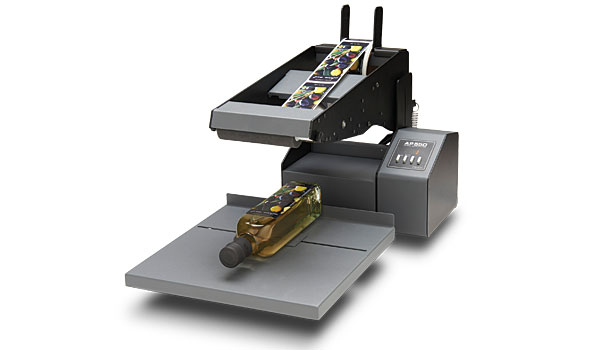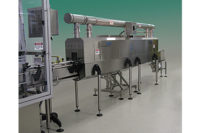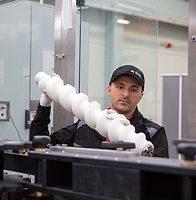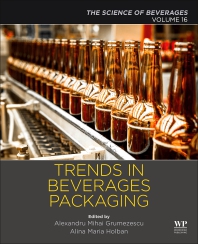When it comes to choosing labeling equipment, customers are interested in machines that offer the widest range of applications and uses, explains Roy Oomen, category manager of labels and packaging for HP Indigo and Inkjet Press, Tel Aviv, Israel. “The market is dynamic and changes all the time, so systems and solutions which offer the broadest capture of projects are the most appealing to owners who have limited dollars to invest in new technology acquisitions,” he says. “More versatile equipment is critical as changeovers are more frequent.”
Instead of investing in specialized, customers can consider modular options for multiple applications and projects, says Dave Niemuth, director of labeling technology for Franklin, Wis.-based Krones Inc. The company offers modular labeling machines that can be equipped with several of the same or different labeling stations so that one modular machine can have multiple functions, he says. As part of this system, individual labeling stations are fastened onto the machine’s base frame. This allows a labeler to combine cold-glue labeling stations and self-adhesive label applicators, as well as other machines such as Krones’ Canmatic labeling stations for pre-cut wrap-around labels, and Krones’ Contiroll labeling stations for roll-fed wrap-around labels, for example, in different combinations, according to Krones.
With the modular labeler system, the individual labeling stations are cart-style stations that can be connected to or rolled away from the machine to allow for more flexibility, according to Krones. When a labeling station exchange is necessary, the operator activates a motorized lift to lower the individual station to the ground, rolls it to a storage place, rolls in the new station, and raises and locks it into place for production, it explains. The height-adjustable docking can be used on any labeling station despite varying conveyor heights or possible irregularities on the ground, according to the company.
This flexible changeout option within the modular system allows labelers to run different types of labels on the same machine at different times by simply switching out the labeling equipment modules, Niemuth says.
Full speed ahead
Beyond flexibility and adaptability, customers also are looking at high speed and efficiency in labeling equipment, says Neal Oechsle, product manager of print and apply labeling machine solutions for Domino North America, a division of Domino Printing Sciences PLC, Cambridge, U.K. “Demands for high speed and increased production throughput is something we see in many industry sectors and particularly in the beverage sector,” he says. “Domino responds to this with inno-vative and fast labeling solutions for the secondary packaging and a number of pallet labeling solutions with height adjustment for tertiary packaging.”
Domino offers a tandem printer solution to keep operations at top speed with little down time, Oechsle says. The system uses both a primary and a secondary labeler to achieve this, he says. “When the primary runs out of labels, it automatically delegates the job to the secondary machinery,” he explains.
Niemuth also notes that Krones’ customers place a high priority on the efficiency of the labeling machines they consider. “What you need to have is a highly efficient labeler in order to run in the upper 90 percent range overall from start to finish, which increases your overall profitability, your bottom line,” he says. “If the machine is down and you have maintenance issues, ... obviously you’re not getting product out the door.”
The best fit
However, speed and efficiency only counts if operators are using the right labeling equipment for the job.
“For instance, lightweight bottles present difficulties running on traditional magazine-fed carousel labelers because the adhesive roller has a tendency to either dent or knock the bottle out of alignment, causing labels to skew or flag,” says John Schnarr, director of strategic marketing for Nordson Corp., Westlake, Ohio. To avoid this problem, Nordson offers PatternJet, a hot-melt adhesive application for labeling machines handling paper or plastic labels, Schnarr says. Instead of using a traditional roller adhesive, PatternJet applies its EcoPattern adhesive through a high-speed hot-melt sprayer, requiring no bottle contact, he says.
The PatternJet and EcoPattern systems also offer a sustainability component in line with the sustainability goals driving the lightweight packaging trend, Schnarr points out. Manufacturers are lightweighting bottles to reduce cost as well as the use of plastic, a derivative of the petrochemical supply chain, he explains. “Like plastic, the holt-melt adhesive used for the application of the label is also a derivative of the same petrochemical supply chain,” he says. “The Nordson solution not only enables the use of a lightweight bottle, but the EcoPattern applies over 50 percent less adhesive to the bottles as compared to a traditional roller. The resulting impact is a more sustainable package, which is easier to recycle due to the lower adhesive coating, and application process with a far less impact on our natural resources.”
For beverage containers with flat surfaces, Primera Technology Inc., Plymouth, Minn., recently launched its new AP550 Flat-Surface Label Applicator. This semi-automatic label applicator precisely applies product and identification labels onto a wide range of flat surfaces, including rectangular or tapered bottles, pouches, lids and more, the company says. The labels are applied straight and in precisely the same place on every package without wrinkles or folds, it says. The system also offers variable spacing, a counter with a built-in LED display, and memory for up to nine jobs, it adds. For added flexibility, the machine also can apply roll- or fan-fed labels printed by methods such as flexographic, offset and thermal transfer, it says.
Primera also offers special, compact label applicators for cylindrical containers, such as wine bottles. To use the AP360 and AP362 desktop machines, operators set the guides, place the bottle on the machine, and press the footswitch to command the machine to apply the label. The built-in spring-loaded pressure arm applies labels firmly and without wrinkles at rates of up to 1,200 bottles an hour, the company says. These applicators also can apply roll-fed, pressure-sensitive labels produced by most other flexographic, offset and digital presses, it says. AP360 is the series’ base model and applies one label at a time; the advanced AP362 model can apply one or two different labels to a single container, it says. Like the AP550 Flat Surface Label Applicator, the AP362 also offers a built-in LED counter and memory for up to nine front-to-back label offsets, the company adds.
For beverage-makers who want to use a clear polyethylene terephthalate (PET) bottle instead of a colored bottle, Rich Keenan, national sales manager for PDC International Corp., Norwalk, Conn., recommends using a shrink-sleeve application. A shrink sleeve allows a beverage-maker to make use of a clear container while still hiding the product due to color or ultraviolet (UV) issues, he says. Plus, a full shrink-sleeve appearance can help a bottle pop on the shelf compared with other label appearances, he adds.
Last October, PDC International launched its R-500 TS-CB Shrinklabeler at Pack Expo in Chicago. The single-head shrink labeler incorporates continuous “steady state” movement of sleeving materials during the cutting and application process, using the lowest web speed possible and eliminating indexing of the web, the company says. Because all motions are continuous, internal machine and dynamic forces are minimized, resulting in a very stable yet high-speed system, running at speeds between 500 and 600 labels a minute, it says.
PDC Internationals’ shrink labelers also allow for 360-degree decoration of oddly shaped bottles, the company says. This allows brands to create distinct brand packaging identities while maximizing the label space for graphics, text, ingredient lists, UPC codes and nutritional information, it says.
Another option for labeling odd-shaped bottles is Krones’ Sleevematic Enhanced Stretch (ES) labeler for stretch-sleeve label applications, Niemuth says. The machine uses a servo-motor-driven sleeve clamp with pins to grab a super-elastic label sleeve from the sleeve feed unit and stretch it open, Krones’ Niemuth explains. Container plates below the sleeve clamps feed the container up into the stretched sleeve for label application. The container is then transferred to a neck handling clamp, and the sleeve wraps snugly around the container. The enhanced stretch sleeves, which are made of low-density polyethylene (LDPE), snap into place to match the contour of the bottle.
By using a stretch labeler, companies can save on material costs, as LDPE stretch sleeves are much smaller than shrink sleeves because they offer up to a 55 percent stretch rate with no glue application necessary, the company says. In addition, this method does not require energy to operate a shrink tunnel to conform the label to the bottle. This method offers a price advantage on the material of up to 30 percent when compared with conventional shrink sleeves, Niemuth adds.
LDPE labels used by Krones’ Sleevematic ES also offer a sustainability advantage. When a bottle with an LDPE label is thrown into the recycling water stream, because of its lower density and lack of glue application, the LDPE material will float off of a crushed bottle, Niemuth says. This way, a recycler can skim the floating LDPE material off of the top of the water and recycle the clean PET, he says.




